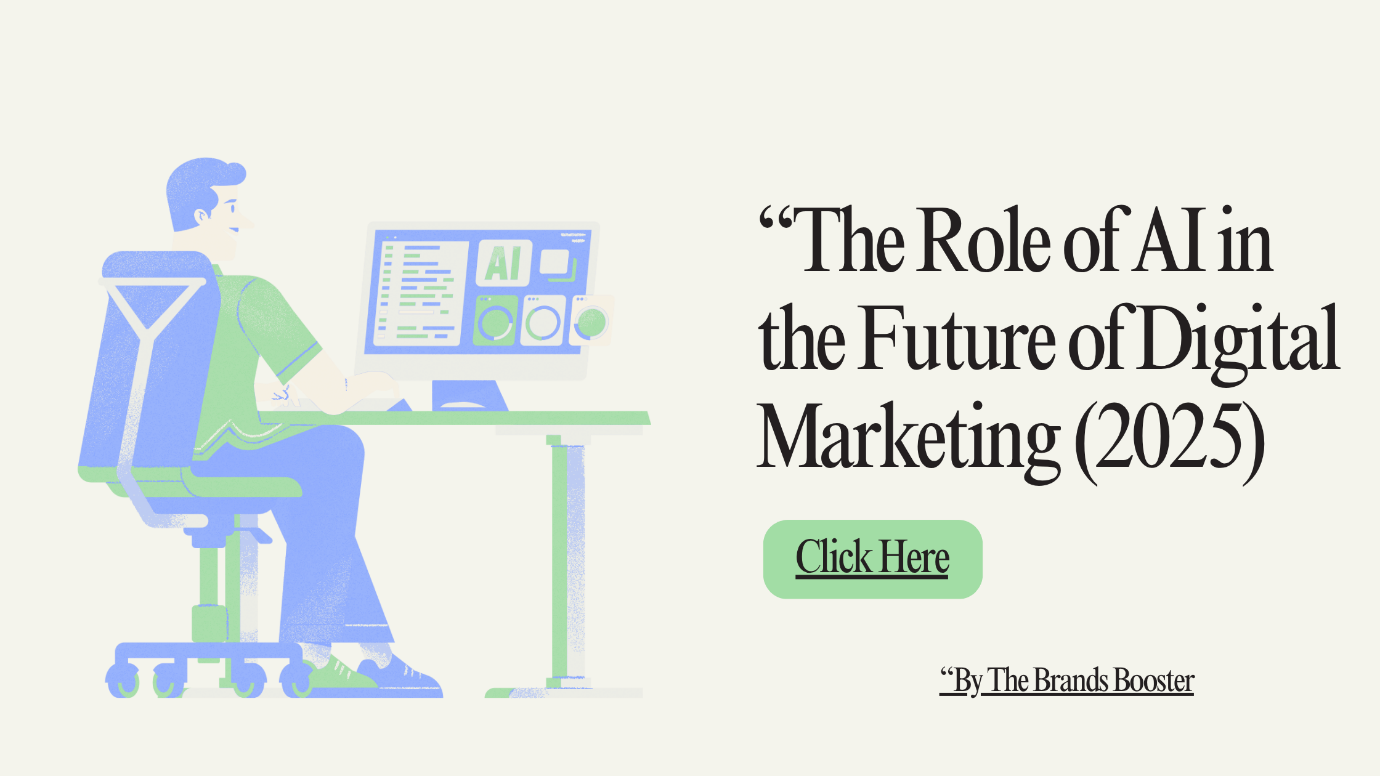Introduction:
Digital marketing is no longer just about content and clicks — it’s about intelligent conversations, personalized experiences, and automation driven by AI. Looking ahead from 2025, artificial intelligence is fundamentally reshaping the way brands engage with their audience.
Smarter Customer Targeting with AI
Artificial Intelligence allows marketers to analyze massive amounts of customer data and predict user behavior. Tools like Google AI, Meta Advantage+ campaigns, and ChatGPT-based chatbots help you:
- Understand customer intent
- Predict purchase patterns
- Target audiences more accurately
- Improved Audience Segmentation
- Improve Personalization
Run efficient paid campaigns
Tip: Use AI-driven tools like Google Performance Max or Meta’s AI audiences to get better ROI on your ad spends.
Content Creation is Changing
With tools like ChatGPT, Jasper AI, and Copy.ai, content creation is faster, more scalable, and cost-efficient. However, original creativity is still important.
AI helps with:
- Writing ad copy, blogs, and emails
- Generating SEO-friendly headlines
Creating video scripts and product descriptions
Voice & Visual Search is Flourishing
With devices like Alexa, Siri, and Google Assistant, voice search optimization is a very important for making daily life of us very convenient, efficient, and accessible. Similarly, tools like Google Lens are making visual search popular.
Your strategy should now include:
- Using conversational keywords (long-tail)
- Adding alt-text for all images
Optimizing for mobile + voice queries
Advanced Personalization Powered by AI
Consumers now expect custom-tailored experiences. AI tracks every click and scroll to deliver personalized suggestions across:
- E-commerce product recommendations
- Email campaigns
- Dynamic landing pages
📍 Pro Tip: Use tools like HubSpot, Active Campaign, or Zoho Marketing Automation to Individualize at scale.
Predictive Analytics for Smarter Decisions
Gone are the days of guesswork. Predictive analytics uses past data to forecast future outcomes. It helps businesses and give cutting-edge approach to forecasting future trends and making data-driven decisions.
- Plan budgets
- Predict sales trends
- Identify high-value customers
- Uncover deep insights
Identify emerging opportunities
Key Components of AI Predictive Analytics: –
- Data
- Algorithms
- Predictions
Expansion of AI Chatbots & Virtual Assistants
From basic FAQs to full purchase journeys or any Customer query AI chatbots are handling more complex tasks in 2025. By Reducing Human Interaction. Tools like Tidio, ManyChat, and Drift are allowing 24/7 automation with human-like interaction.
Benefits:
- Instant customer support
- Lead qualification
- Conversion boosting
- Provide fast answers to customer inquiries
Operate 24×7
Ethical Marketing & AI Transparency
With growing AI usage comes responsibility. Consumers want to know how their data is used. It builds trust and ensuring responsible use of technology in today’s world. Ethical marketing Highlights fair, honest, and transparent practices, while AI transparency focuses on making AI systems accessible and accountable
Make sure to:
- Be transparent about AI-generated content
- Follow privacy laws (GDPR, etc.)
Avoid manipulative targeting
Automation in Ads, Emails & CRM
Digital marketing is now automated from ad creation to lead nurturing. AI helps you optimize every touchpoint. It increased efficiency, improved customer experience, and better data-driven decision-making
- Google Ads auto-bidding
- Email triggers based on behavior
- CRM updates and pipeline management
- Lead analysis and scoring
- Quick Campaign Execution
- Increase efficiency and productivity
💬 Tip: Combine AI with tools like Mailchimp, Salesforce, or Zoho CRM to streamline workflow.
Conclusion: Adapt or Be Left Behind
In 2025 and beyond, AI is not replacing marketers — it’s Fostering them. Those who praise automation, personalization, and analytics will lead the digital Competition. The future of digital marketing is smart, scalable, and deeply human at its core.





